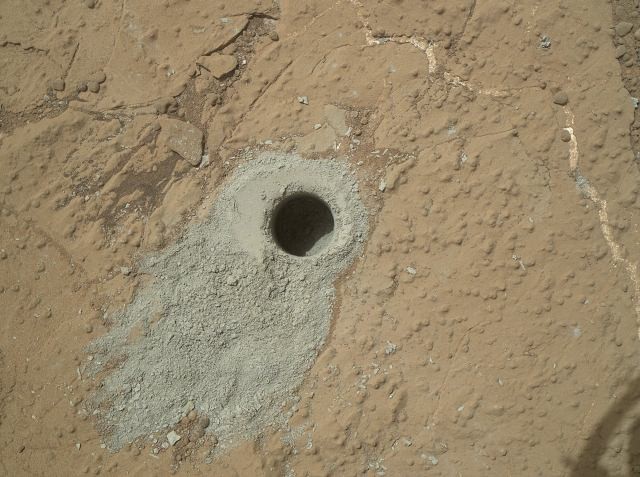Scientists have long debated the possibility of existence of life on Mars. However, researchers are yet to present a definite answer. But two new studies suggest that the environment on the red-planet contains compounds that are essential for building and sustainability of biological matter.
The two studies were published in the journal Proceedings of the National Academy of Science on March 23. According to Business Insider, NASA's Mars Curiosity Rover identified the presence of nitrogen compounds that may have once supported life on red planet. The samples were reportedly found in Gale Crater.
The second study reveals the possibility of how carbon monoxide can support the existence of microbial life on Mars.
The team of researchers, spearheaded by Jennifer Stern of NASA Goddard Space Flight Centre in Greenbelt, analyzed samples collected by Mars Curiosity Rover. According to the space research scientist who is devoted to the study of the surface chemistry of Mars, the origin of nitrogen possibly lies in disintegration of nitrates as it is heated.
The samples of nitrates analyzed by the team of researchers represent Martian soil and rocks, a region thought to be ancient lakebed. The report notes the discovery of aboriginal "fixed" nitrogen on Martian surface suggest the possibility of Mars being a habitable planet in the past.
According to Space, Curiosity collected the samples analyzed by the scientists from three regions named Rocknest, Cumberland and John Klein. "Had life been there, it would have been able to use this nitrogen," Stern told Space.com
On the contrary, the report notes, the presence of nitrogen may only be the result of lightening or heating or impact of other components on Mars surface.
"This suggests that N is currently being fixed in the Martian thermosphere, although it is unknown how much, if any, is transported to the lower atmosphere and surface," the researchers theorised in the paper.
Meanwhile, the second study talks about the findings by Gary King of Louisiana State University. His study, as published in the above mentioned journal, suggests that carbon monoxide, the gas that is found in abundance on Mars, may be a source of energy that possibly supported microbial life in past as well as present. "These results collectively establish the potential for microbial CO oxidation under conditions that might obtain at local scales (e.g., RSL) on contemporary Mars and at larger spatial scales earlier in Mars' history," Gary King wrote in the paper.



























